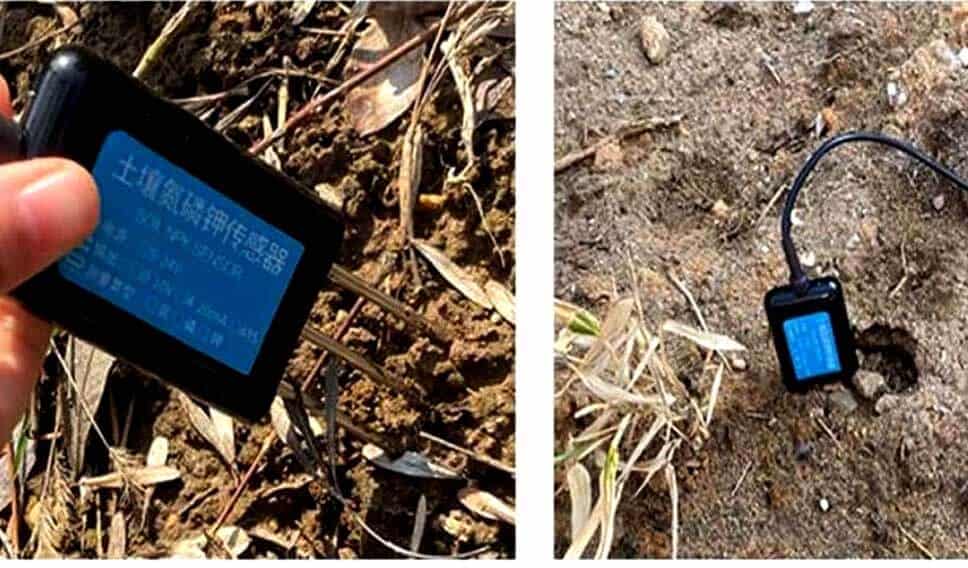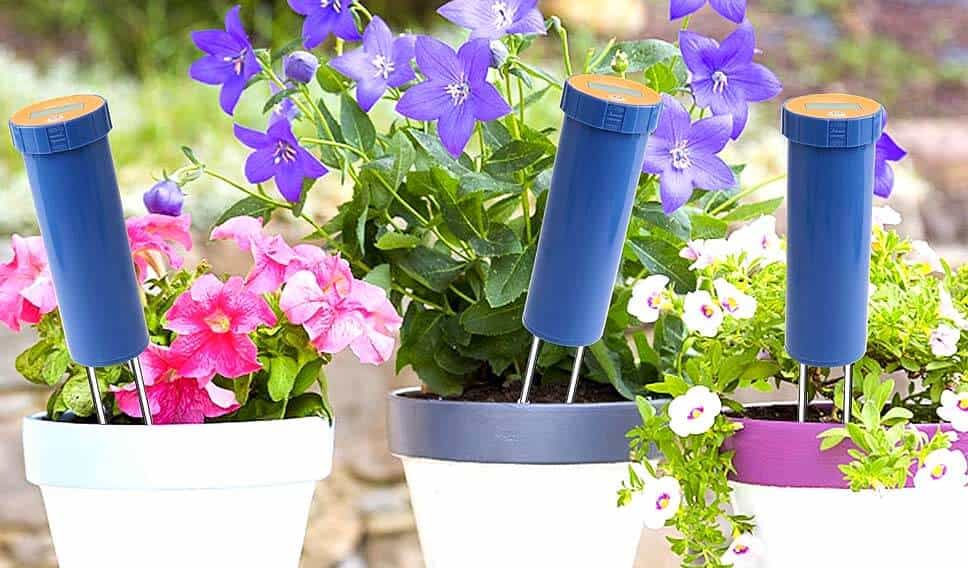This article will cover all the aspects concerning the application of sensors in agriculture. Labour shortages, decreased soil fertility due to poor land management, erratic climatic fluctuations, and the rising need to adopt more sustainable practices are some of the significant obstacles facing the agricultural business.
Therefore, adopting contemporary and precise farming practices and installing different sensors is essential to increase yields and gather reliable data.
To combat these problems and ensure farmers can keep up with the growing demand for food, they may use a farm management method called “precision agriculture,” which uses information technology to boost agricultural output and sustainability.
What Is A Sensor?
A sensor is a device that takes an accurate measurement and turns it into an electric signal. Its uses are in various applications, including industrial automation, medical devices, transportation, and home automation. Sensors monitor and control processes, measure vital signs, and ensure safety in various environments.
Common types of sensors include temperature, pressure, flow, level, position, and image sensors. Sensors are essential in modern technologies, enabling us to measure and control the world around us and promoting the development of new and innovative applications.
Also Read: How GPS is Used in Agriculture
What Are Agricultural Sensors?

Click the image to purchase on Amazon.
Agricultural sensors are gadgets that measure soil wetness, temperature, pH, and crop growth related to farming. With these tools, farmers can get better food returns, save money on inputs, and make better decisions about how to run their farms.
Soil wetness sensors, temperature sensors, pH sensors, and crop health monitors are just some of the most common types. The rising number of people living around the world will result in an increased need for food, which will, in turn, elevate the significance of agricultural surveillance.
Sensors can help farmers make better choices about crop growth by collecting and analyzing data. It can lead to higher crop yields, lower costs, and a more stable food supply. Using monitors in farmland can help increase food yields, lower input costs, improve decision-making, and make farming more sustainable.
Agricultural monitors are still in their early stages, but they have the potential to change farming by collecting and analyzing data. It could lead to higher outputs, lower prices, and a more stable food supply.
What Variety of Sensors Are Common in Farming?

Click the image to buy on Amazon.
In agriculture, sensors come in a wide variety; each optimized for measuring a distinct physical characteristic. In agriculture, some of the most used sensors include:
Soil Moisture Sensors: They detect and record soil moisture. Using soil moisture sensor data is to optimize plant watering schedules.
Temperature Sensors: Soil, air, and water temperatures are the work of sensors that collect this data. Knowing this allows farmers to monitor their crops and spot any issues early on.
pH Sensors: It determines the Soil acidity and alkalinity. This data have used to assess the soil’s nutrient density and adjust fertilizer applications accordingly.
Crop Health Sensors: Sensors that assess crop health monitor things like stress, pests, and illnesses. With this knowledge, issues and solutions become possible to control.
Image Sensors: They can take pictures of crops and assess crop conditions, spot pests, and monitor growth.
Airflow Sensors: These sensors monitor soil air penetration. Moisture, soil type, compaction, and structure form diverse soil signatures.
Location Sensors: Sensors that detect movement in a particular area monitor the whereabouts of people, machinery, and products in a field. Safer and more efficient field operations are possible to use this data.
Wireless Sensors: These sensors collect information in the field and send it wirelessly to a control room. Thus, it enables remote crop monitoring, allowing farmers to make educated management choices.
Electronic Sensors: They monitor field equipment like tractors. Cellular and satellite communications provide data to computers or directly to people. The supervisor in charge may now view the information on their office computer or mobile phone.
While the use of agricultural sensors is still in its infancy, it has the potential to alter the farming industry significantly. Improved agricultural yields, lower input costs, and a more secure food supply are all possible thanks to the information gathered and analyzed by sensors.
Also Read: 6 Smart Home Lawn And Garden Products?
Pros And Cons Of Using Agricultural Sensors
Every picture has two aspects, front and back, so the case with using sensors in the agricultural industry. Here are some of the pros and cons of using agricultural sensors:
Pros:
Increased Crop Yields: Sensors can help farmers to optimize their crop yields by providing information on the best time to irrigate, fertilize, and harvest.
Reduced Input Costs: Sensors can help farmers to reduce their input costs by allowing them to use water, fertilizer, and other resources more efficiently.
Improved Decision-making: Sensors can help farmers to make better decisions about their crops by providing them with real-time data on the health and condition of their crops.
Sustainable Agriculture: Sensors can help farmers adopt more sustainable farming practices by reducing their environmental impact.
Early Detection of Problems: Sensors can help farmers detect problems, such as pests, diseases, and crop stress. It can help to prevent significant damage to crops and reduce the need for pesticides and other chemicals.
Remote Monitoring: Sensors can be used to monitor crops remotely, which can be helpful for farmers who have large farms or are unable to be on their farms all the time.
Cons:
Cost: Sensors can be expensive to purchase and install. However, the cost of sensors is decreasing as the technology improves.
Data Management: The data collected by sensors can be large and complex. It can make it challenging to manage and analyze the data.
Connectivity: Sensors need to be connected to a network to transmit data. It can be a challenge in some areas, such as rural areas.
Privacy: The data collected by sensors can be sensitive. It raises privacy concerns for farmers and consumers.
Overall, the pros of using agricultural sensors outweigh the cons. Sensors can revolutionize how we farm, leading to increased yields, reduced costs, and a more sustainable food supply. However, some challenges need to be addressed, such as the cost of sensors and data management challenges.
In the future, we anticipate seeing even more advantages stemming from using agricultural sensors, thanks to the ongoing development of the technology.
Global Market Of Agricultural Sensors
According to a Statista post by M. Shahbandeh and released on May 10, 2022, By 2026, the world market for farm monitors will likely grow a lot.
From 2021 to 2026, the value of sensors that can be used to control water and soil is expected to more than double to about 3.1 billion US dollars for water sensors and 3.98 billion US dollars for soil sensors.
From 2020 to 2026, the market for temperature sensors is expected to grow by almost USD 400 million.
Also Read; How to Grow Fruit Trees in Containers
Future Of Using Sensors in Agriculture
The future of using sensors in agriculture is promising. The use of agricultural sensors is expected to provide even more significant advantages in the future due to the ongoing development of related technologies. Here are some of the potential future applications of agricultural sensors:
Precision Agriculture: Precision agriculture is a farming approach that uses sensor data to optimize crop yields and reduce input costs. For example, sensors can track soil wetness, temperature, and nutrient levels. This information can determine the best time to water, fertilize, and harvest crops.
Smart Irrigation: Smart irrigation systems use sensors to monitor soil moisture and weather conditions, and this data is used to determine the best time to irrigate crops. It can help to save water and reduce the risk of over-watering crops.
Crop Health Monitoring: Sensors can be used to monitor the health of crops by detecting factors such as pests, diseases, and crop stress. This data can be used to identify problems early and take action to prevent significant damage to crops.
Animal Monitoring: Sensors can be used to monitor the health of livestock by tracking their movement, eating habits, and body temperature. This data can be used to identify problems early and take action to improve livestock health.
Remote Monitoring: Sensors can be used to monitor crops and livestock remotely, which can be helpful for farmers who have large farms or are unable to be on their farms all the time.
Challenges While Realising Agricultural Sensors
Agricultural sensors are rapidly growing, and new applications are constantly being developed. To fully realize the promise of farming sensors, a few obstacles must be overcome first. Here are some of those obstacles:
Cost: Sensors can be expensive to purchase and install. However, the cost of sensors is decreasing as the technology improves.
Data Management: The data collected by sensors can be large and complex. It can make it challenging to manage and analyze the data.
Connectivity: Sensors need to be connected to a network to transmit data. It can be a challenge in some areas, such as rural areas.
Privacy: The data collected by sensors can be sensitive. It raises privacy concerns for farmers and consumers.
Despite these challenges, the future of using sensors in agriculture is promising. We may anticipate that agricultural monitors will be helpful to us in even more ways as technological advancements continue to be made.
Also Read: Unique Gardening Tools That Will Up Your Gardening Game
Conclusion
In short, Using sensors in agriculture has transformed how farmers cultivate their harvests. Producers can optimize irrigation by monitoring soil moisture levels with sensors to reduce water consumption and conserve resources.
Additionally, sensors can monitor crop health, insect infestations, and other factors influencing crop yield. Using sensor data, farmers can make more informed judgments regarding when to plant, how to fertilize, and when to harvest crops. Using sensors in agriculture can increase crop yields, enhance water conservation, and reduce the need for chemical inputs.
Recent Posts
Here is reply of high-demand removable wallpapers. The wallpaper industry has changed a lot in recent times, with the launch of removable wallpaper being seen as a blessing for homeowners, renters,...
Brown is an often neglected color when considering interior design but brown decor living room ideas could make your house feel warm, sophisticated, and timeless. More adaptable than any other...
